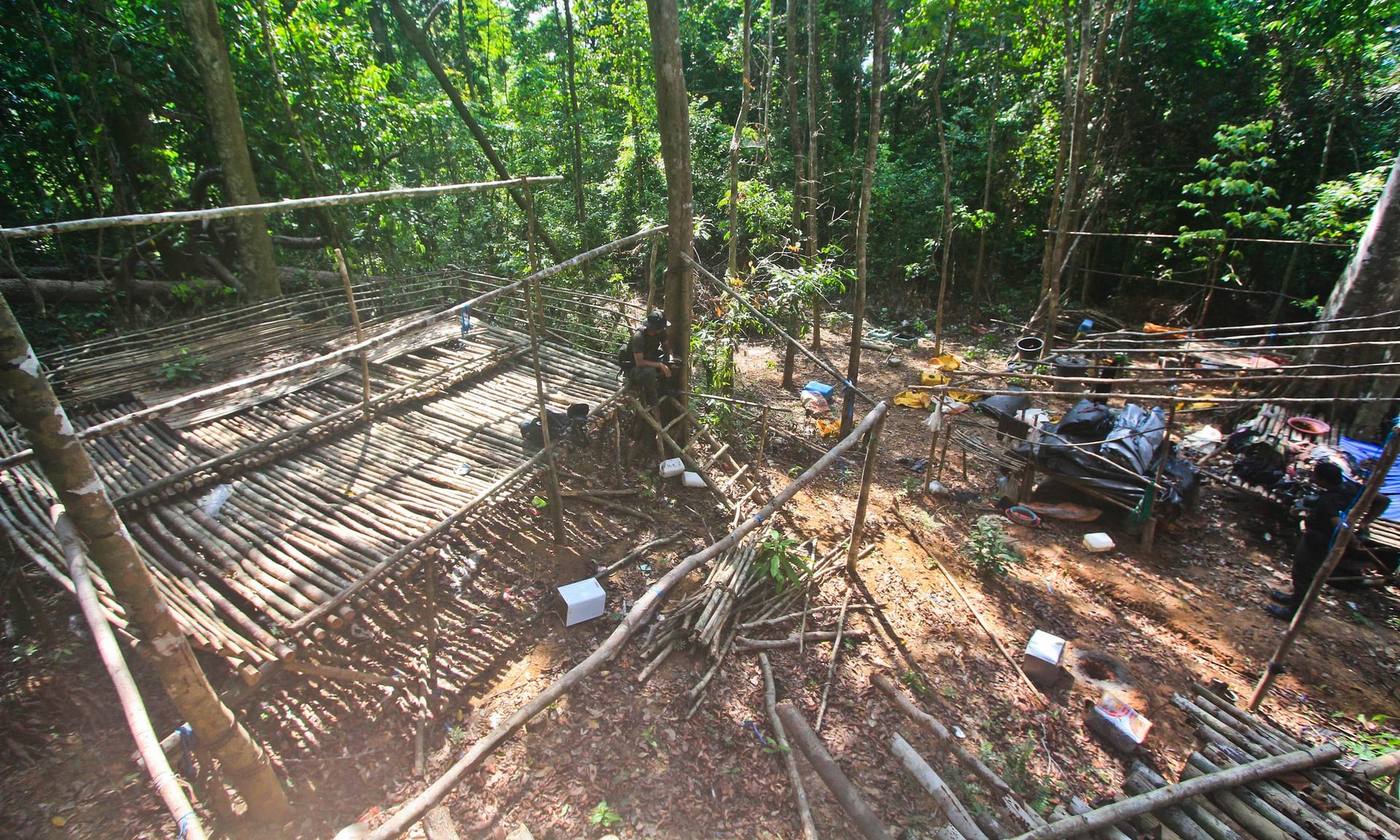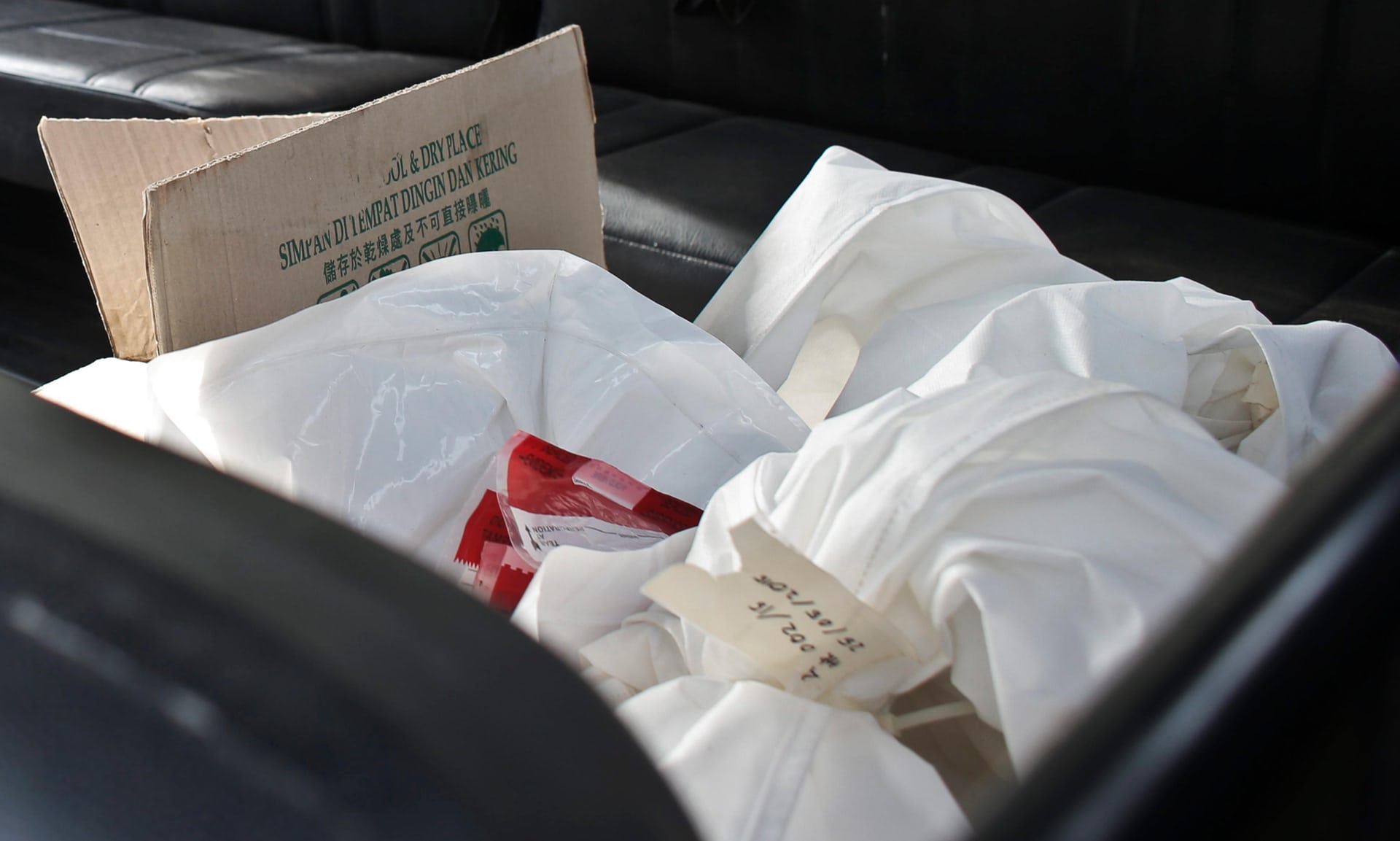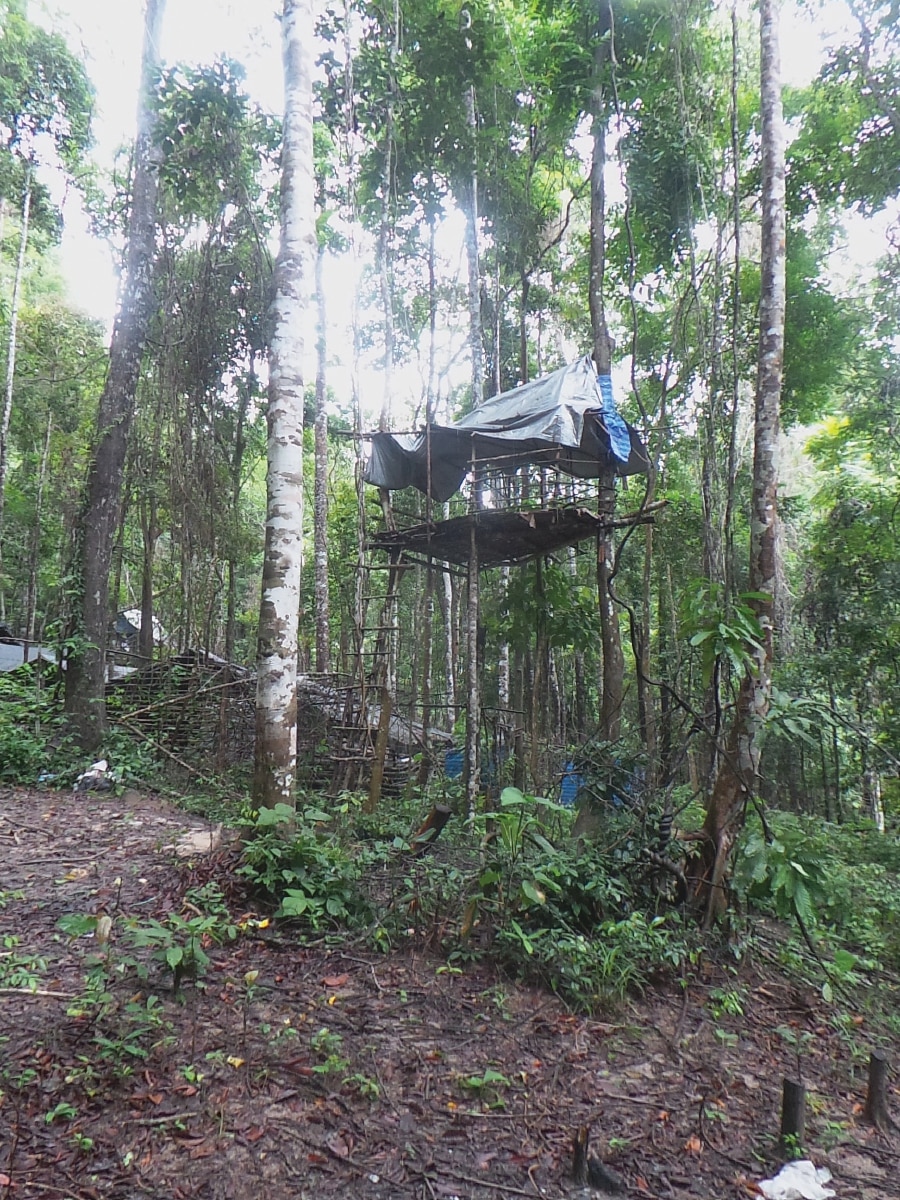The 5 Major Highlights Of NST's Wang Kelian Human Trafficking Exposé
"Will those behind this heinous crime against humanity be made to pay, and will the men, women, and children who died trying to get a second chance at life, ever get the justice owed to them?"
In May 2015, 139 graves and 28 abandoned camps were discovered in the dense jungles along the Thai-Malaysia border in Wang Kelian, Perlis.
The squalid camps were used to house human trafficking victims.
The graves were found in Perlis, bordering Thailand's Songkhla province, where Thai authorities stumbled upon a mass grave and human trafficking camps that they suspect held almost 800 people in early May 2015.
Former Malaysian IGP Khalid Abu Bakar confirmed the shocking discovery on 25 May 2015. "It is a very sad scene. I am shocked. We never expected this kind of cruelty," he told reporters, according to a Guardian report.
Describing the conditions of the camps, Khalid said the police found crudely built cages made from wood and barbed wire that were too small to even stand in where they believe the human trafficking victims were imprisoned.
"They were not allowed to move freely and traffickers kept watch at sentry posts," he added. As they dug deeper, they found a pink teddy bear and other children's items in one of the camps. Bullet casings and metal chains added to the discovery, indicating that the victims were not only held in inhuman condition, but were also tortured.
Soon after, New Straits Times (NST) reported that more than 150 remains of foreigners were exhumed from the unmarked mass graves in Wang Kelian.
Autopsies conducted on the remains revealed that the victims had starved to death or died of diseases. The first decomposed body the investigators found was described as having "only bones and little bit of clothing on it".
These discoveries shed light on the growing human trafficking crisis in Malaysia. A 2009 report on the trafficking and extortion of Burmese migrants in Malaysia and Southern Thailand to the Committee of Foreign Relation United States Senate detailed the alleged complicity of Malaysian government officials with human traffickers.
"Burmese migrants in Malaysia, often, regardless of whether they possess UNHCR identification, are arrested and placed in detention facilities. The committee has reports of individual refugees UNHCR official documentation being destroyed by Malaysian officials at the time of arrest or later."
The report cited testimonies from Burmese migrants which explained how the smuggling camps operated in Malaysia.
Once captured, the migrants would allegedly be transported to the border by Malaysian government officials and later handed over to human traffickers, operating from the Thai side of the border.
The migrants would then be held in captivity close to Malaysia-Thai border areas, beaten and sexually abused.
Their only way out is if they know someone in Malaysia who can pay a ransom of RM1,500 to RM1,900 per person, which is pretty much impossible to gather, given the fact that most of these migrants are Rohingya Muslims and Bangladeshis who are trying to escape persecution and poverty-stricken lives in their home countries.
If they are unable to raise the money for their release, the migrants would then be sold into slavery, to fishing boats and brothels. But the discovery of these mass graves indicate that the chances of making it out alive of the camps are slim.
More than two years after the shocking discovery of the Wang Kelian graves and human trafficking camps, New Straits Times' two-year investigation on the case uncovered some horrid truths.
Here are five major highlights from the report:
1. The Perlis police found out about the existence of the Wang Kelian jungle camps in January 2015, but only made the discovery public almost half a year later on 25 May
One of NST's sources, who only wanted to be identified as ASP J.K., had lodged a report on the matter, stating that two General Operations Force (GOF) officers "stumbled upon an observation post" on a tree during a "routine patrol" at a "dumpsite" in the jungle of Wang Kelian at 10.15pm on 19 January 2015.
Further checks on the same night found a trail leading into the Mata Ayer forest reserve. They followed the trail to the top of Bukit Wang Burma with a 30-man raiding team.
There, they found a 30m X 30m campsite and that was the first time the Perlis authorities found a human trafficking syndicate along the Nakawan Range. The team spotted six cages with groups of men and women packed in. The campsite was guarded by foreign men who were armed with M-16 rifles.
At about 4.30pm the next day, on 20 January 2015, the authorities conducted a raid and detained 38 human trafficking victims, 22 Bangladeshi and 16 Burmese nationals.
NST says the official after-action report claims that around 150 human trafficking victims whom the team saw caged up earlier, had "escaped into the jungle" along with the armed foreign men.
"How the men and women managed to "escape" the assault team remains unknown. We will never know how many innocent lives could have been saved if they had acted earlier," read the NST report. The authorities confirmed months later, during the 25 May press conference that the sites were only vacated three weeks before.
2. An order to destroy the campsite was issued the day after the first campsite was found
The day after the discovery, the officer who led the raid team allegedly met the Perlis deputy police chief.
NST says the order to destroy the campsite was issued after that and it was when they went back to carry out the directive that they found the first 30 graves in Wang Kelian.
"Why did the Perlis police issue the order to destroy the camp a day after the General Operations Force (GOF) reported the discovery? Who issued the order? Wouldn't this be construed as tampering with evidence/crime scene?" asked NST.
3. An independent report from another police team contradicts ASP J.K.'s report. It says the assault team never reached the campsite on the night of 19 January 2015.
According to this new report, only eight men were dispatched that night and they were split into two - one was led by the GOF officer who called for backup and the other by an officer sent for the mission.
They had allegedly taken different routes to the camp and the team led by the GOF officer heard the camp guards shouting, "Run! The police are here!" when nearing the campsite. It was about three to five minutes later that the team led by the special officer turned up, claiming that he was given an order to pull back.
4. More than 10 Wang Kelian locals were identified as middlemen who work closely with the human trafficking racket in Thailand and Malaysia
After the January 2015 human trafficking base camp discovery in Wang Kelian, the authorities submitted a comprehensive report on it. 12 locals were flagged for acting as middlemen who "deliver the goods" to the human traffickers.
When questioned, the men admitted to working with the personnel in border security agencies to ensure that the trafficking operations go undetected and run smoothly.
"Many of these agencies are highly involved in human trafficking, and this is a serious trans-border crime that cannot be eliminated by arresting illegal immigrants and deporting them.
"For as long as there are authorities working hand-in-glove with these syndicates, eradicating this problem will be an uphill battle," stated the report on the Bukit Wang Burma raid, sighted by NST.
5. NST reached out to Deputy Inspector-General of Police Tan Sri Noor Rashid Ibrahim with their findings, but he refused to comment. Former IGP Khalid, on the other hand, agreed to talk about the case, but only on strict orders that it's off-the-record.
After two years of thorough investigation, the NST Special Probes Team still had so many unanswered questions about the Wang Kelian case.
"WHY was the camp not immediately cordoned off and the remains exhumed?"
"WHAT happened to the 38 migrants taken into custody by assault team? Aren't they prime witnesses?"
"WHY were they investigated for immigration offences? Were they not prime witnesses?"
"WHAT was the overwhelming justification in allowing the slaughter of scores of innocents, including women and children to continue unabated?"
It took Khalid a while before he finally answered their questions. "And when he did, his voice betrayed the enormity of what he was about to tell us."
Bound by journalistic code of ethics, the NST team is not able to publish or reveal Khalid's responses to the burning questions on the issue.






